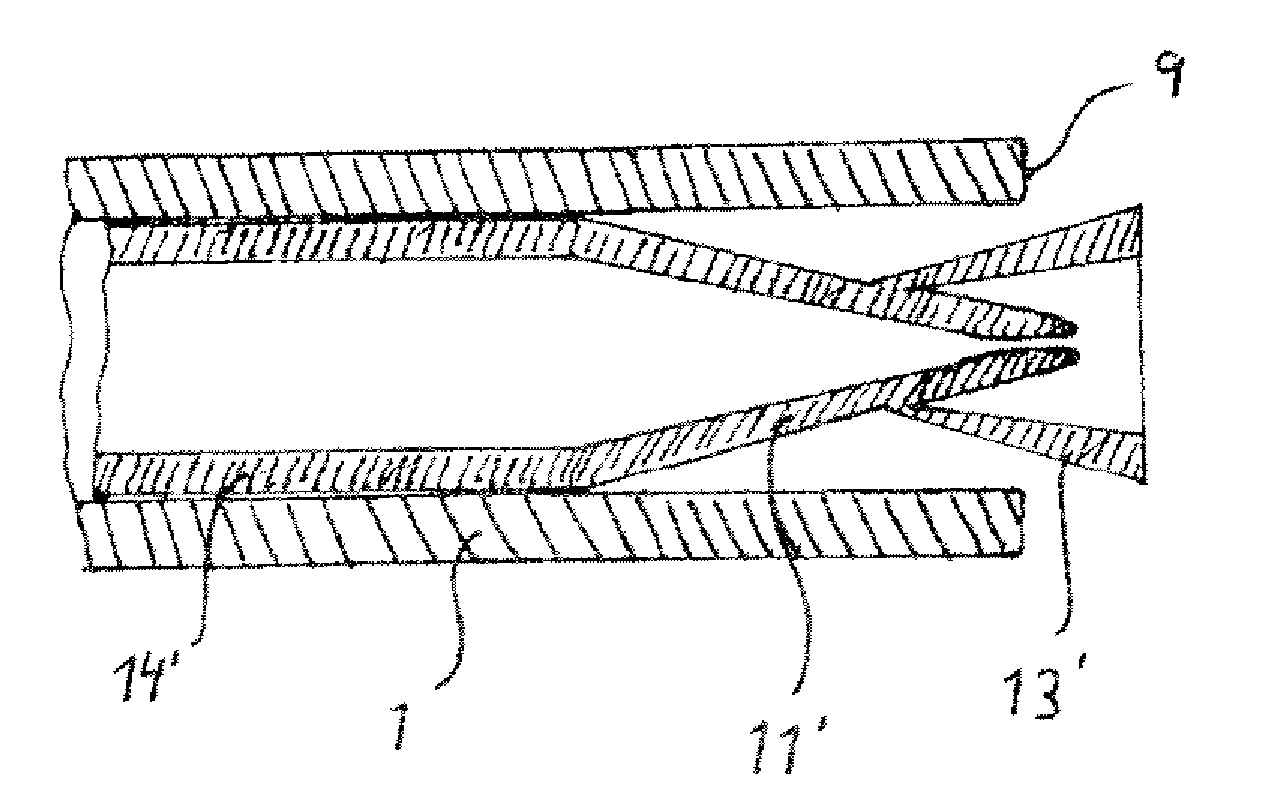Insertion aid for percutaneous tracheostomy
a percutaneous tracheostomy and insertion aid technology, applied in the direction of guide needles, respirators, medical science, etc., can solve the problems of cricoid cartilage fracture, high risk of injury, sudden transition can be a real problem, etc., to achieve high wearing comfort, reduce the risk of injury, and facilitate the insertion procedure
- Summary
- Abstract
- Description
- Claims
- Application Information
AI Technical Summary
Benefits of technology
Problems solved by technology
Method used
Image
Examples
Embodiment Construction
[0039]FIG. 1 shows in a longitudinal section the tracheostomy tube numbered 1, wherein an insertion aid in the form of a flexible plastic rod or preferably a plastic tube with a conical tip 8 extends through the inside of the tracheostomy tube and projects from the tracheostomy tube 1 at the distal end. As the conical tip 8 must be withdrawn after insertion of the cannula 1 and no possibility is provided of reducing this diameter, the diameter of the conical tip on the base corresponds approximately to the internal diameter of the tracheostomy tube 1, with the result that the end-surface 9 of the distal end of the tracheostomy tube, which must be inserted through the tracheostoma, is exposed.
[0040]It is understood that all the figures reproduce the individual elements and features only schematically and that for example the ratio of the wall thickness to the internal diameter of the tracheostomy tube 1 is exaggerated in these figures. In addition, the edges on the end-surfaces 9 of ...
PUM
 Login to View More
Login to View More Abstract
Description
Claims
Application Information
 Login to View More
Login to View More - R&D
- Intellectual Property
- Life Sciences
- Materials
- Tech Scout
- Unparalleled Data Quality
- Higher Quality Content
- 60% Fewer Hallucinations
Browse by: Latest US Patents, China's latest patents, Technical Efficacy Thesaurus, Application Domain, Technology Topic, Popular Technical Reports.
© 2025 PatSnap. All rights reserved.Legal|Privacy policy|Modern Slavery Act Transparency Statement|Sitemap|About US| Contact US: help@patsnap.com



